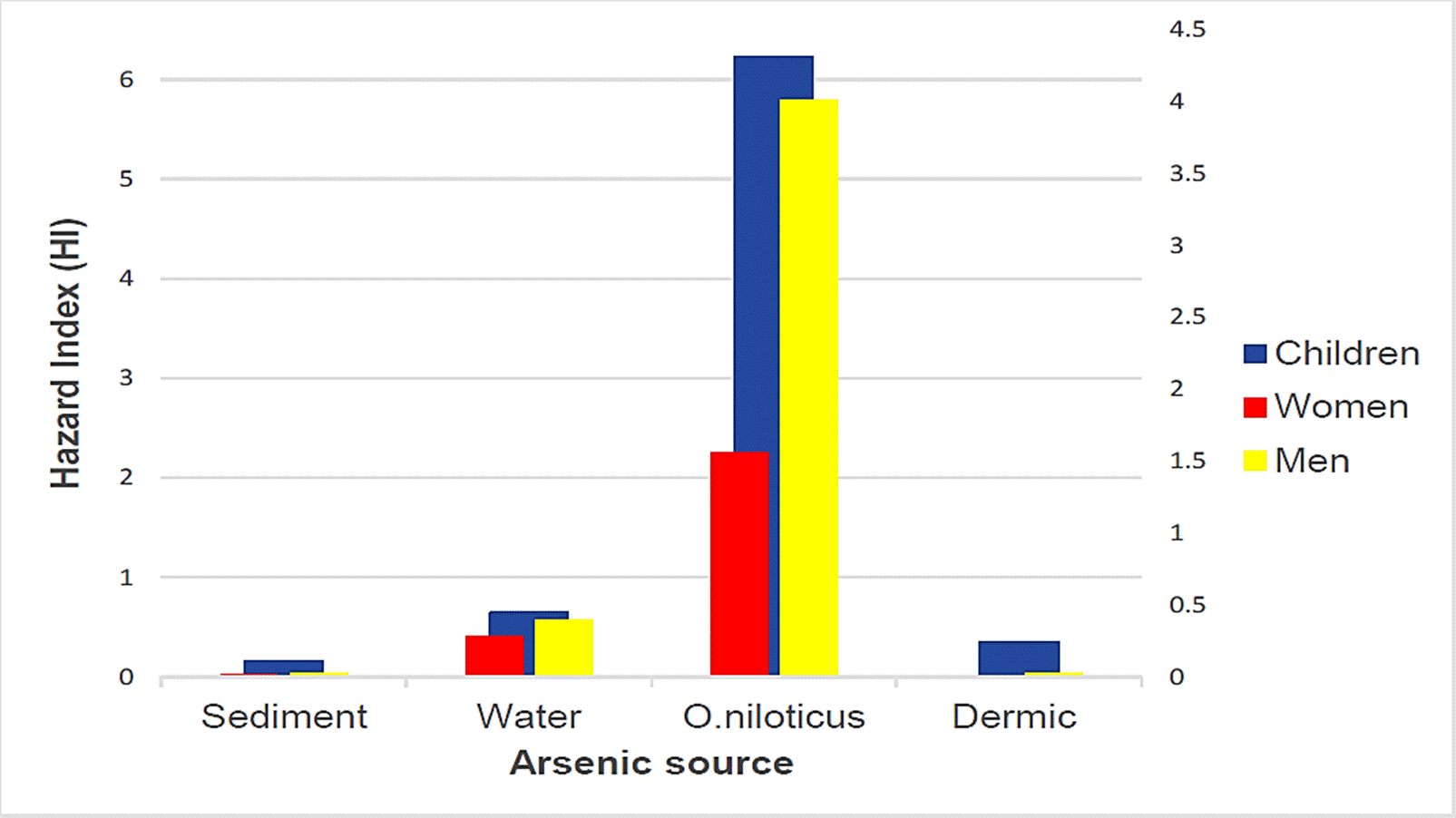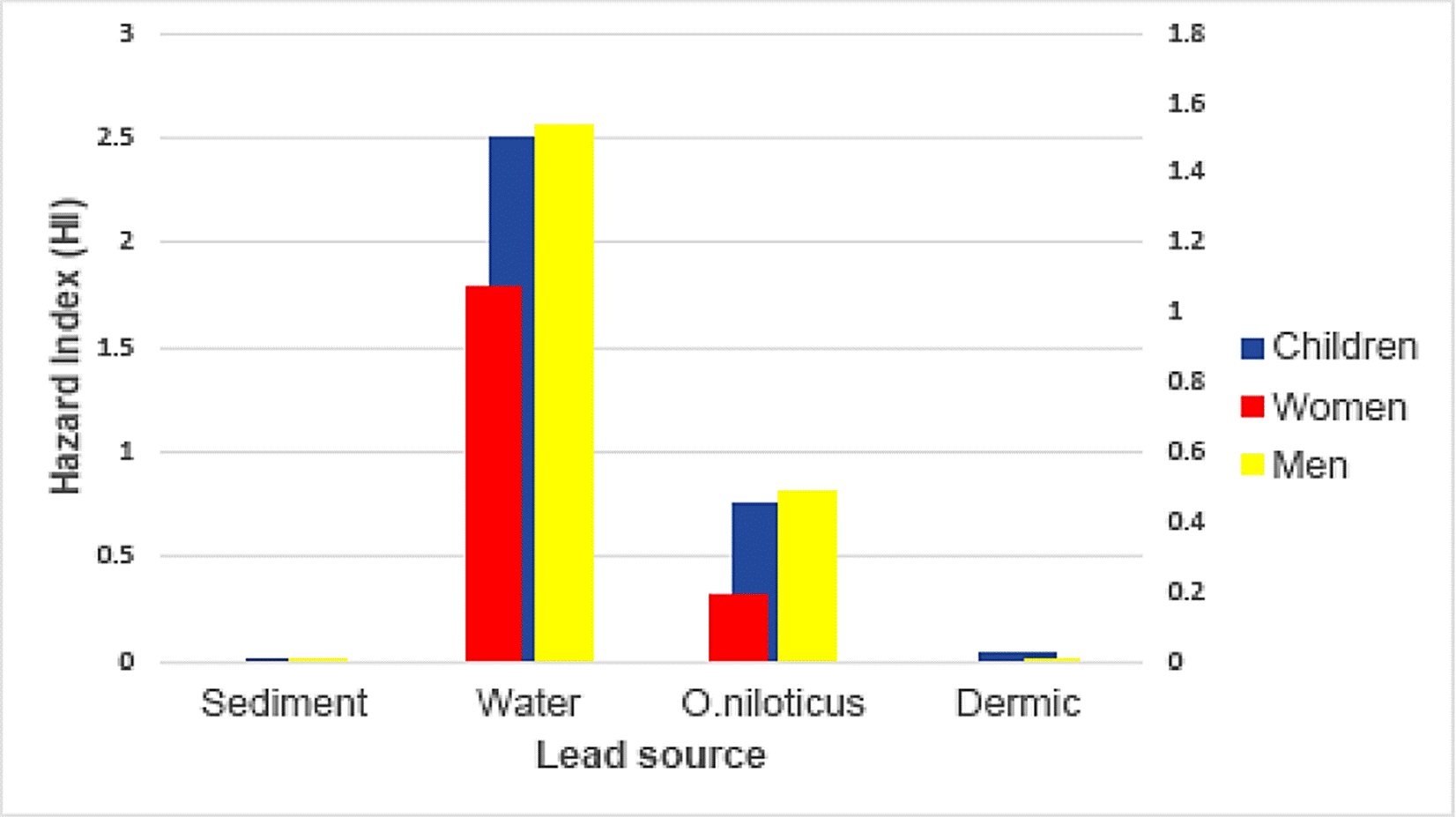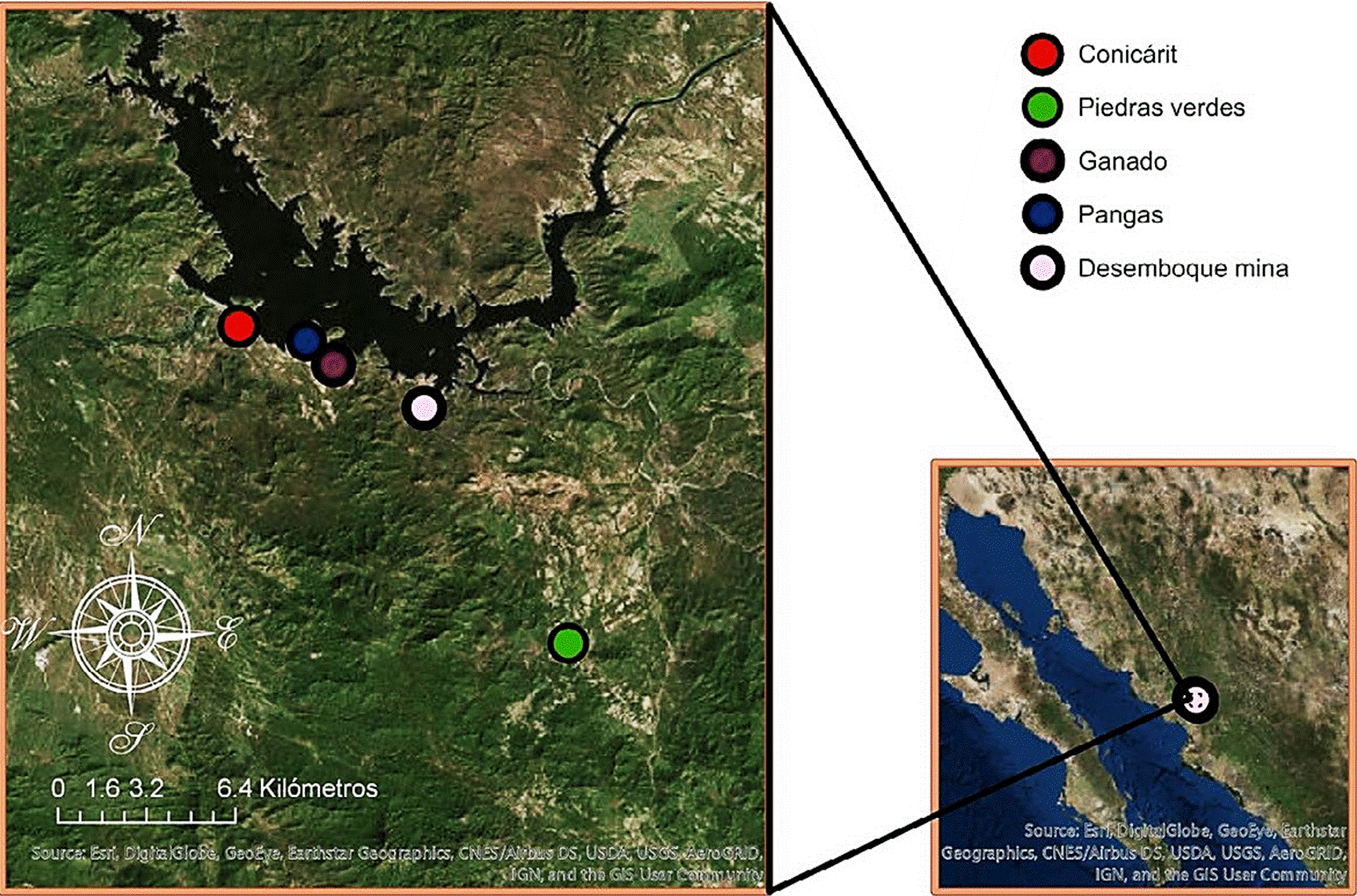Introduction
Heavy metals are contaminants that may affect the health of human beings, animal and vegetal species due to their toxicity, persistence and bioaccumulation properties (Yi et al., 2011). Contamination of the food chain is the most relevant route of exposure in individuals (Ratul et al., 2018), which is why the removal of heavy metals in food and water is one of the main challenges for food safety (WHO, 2013).
Mining activities, manufacturing processes, combustion and pesticides are the main sources generating significant concentrations of heavy metals. These pollutants are discharged in water bodies, which are biomagnified (Wuana & Okieimen, 2011; Liu et al., 2018), in turn, these metals can be deposited in sediments and stored in riverbeds, and also infiltrated in underground water (Yi et al., 2011; Wongsasuluk et al., 2014).
Locations close to mines have been reported in worldwide scientific literature to contain metals at levels exceeding criteria for potable and surface water (Calla & Cabrera, 2010; Yi et al., 2011; Wongsasuluk et al., 2014; Modoi et al., 2014). High concentrations of metals in the organism of living beings affect the biochemical and physiological processes producing diverse pathologies. Chronic exposition to heavy metals can produce lesions in skin, neurological disorders, diabetes, cardiovascular problems and cancers (Tchounwou et al., 2012).
Adolfo Ruiz Cortines dam is located in the southern of Sonora, is also known as “El Mocúzarit,” whose waters are used for irrigation of crops of Valle del Mayo region. Part of this water reserve is even used in the watertreatment plant of Huatabampo municipality. At scarce meters from this dam, a private copper mine is installed, providing jobs to hundreds of habitants from Álamos and Navojoa municipalities. Communities of less than 400 people live in adjacent places to the dam and the mine, and also drink water from wells and consume fish from dam areas near to the copper mine.
In this study are detailed results of heavy metal analysis (As, Pb, Hg, and Cu) in surface water, dam sediment and Oreochromis niloticus (tilapia) from the Alfredo Ruiz Cortines dam and from tap water of Piedras Verdes and Conicárit communities nearby the dam and the copper mine. The objective of this research study was to assess human health risks for consuming O. niloticus, tap water and costal sediments contaminated with heavy metals in communities adjacent to a copper mine and to Adolfo Ruiz Cortines dam in Alamos, Sonora, Mexico.
Materials and Methods
Geographic location
In this study, heavy metals monitoring was performed for 9 months (including rainy and dry seasons) with a two-month frequency of As, Cu, Hg, Pb in surface water, tap water, sediment and fish in Adolfo Ruiz Cortines dam since May 2017 until March 2018. All the samples were collected in five strategic points: tap water was sampled in Conicárit and Piedras Verdes communities and surface water and dam sediments were sampled from the site where water is discharged from the mine, from the dock of fishermen’s barges and from the area of cattle breeding (Figure 1).
Studied population
A total of 686 habitants was estimated to live in Conicárit and Piedras Verdes populations. Population size was assessed with a margin of error of 10 % and a confidence level of 90 % using statistic software Epi Info 7.2 with the purpose of performing a transversal study by means of consumption, health and symptomatology surveys (age, weight, sex, diseases, etc.) in these localities to estimate patterns of water and food consumption (size of portions and frequency of food intake).
Sampling
Water and sediment were sampled in polyethylene bottles, previously washed with concentrated nitric acid and distilled water (1:1). Regarding water, samples (tap water and surface water), they were sampled from the surface, taking care of not incorporating soil, next were added after sampling 0.5 mL of nitric acid free of metals (Omnitrace), for preservation. The sediments dam ware collected from the marine surface riverbed (20 cm) and for fish being the highest sale and consumption; tilapia (O. niloticus) samples were bought in the area of anglers’ barges, the fishes were saved in polyethylene bags with zipper until reaching the laboratory. Samples were kept refrigerated until its analysis in the Biochemistry and Toxicology laboratory (BTL) of the University of Sonora, south regional campus.
Heavy metals analysis
Samples were transported in an icebox until reached BTL. Samples where were digested by wet chemistry analysis with nitric acid at 70 %. Atomic absorption spectrophotometry coupled to a hydride generation system (DOF, 2018) was used to quantify heavymetals. The analysis was performed by duplicates and with its respective blank reagents and standard solutions as quality control, processed according to the NMX-AA051-SCFI-2016 standard. Detection limits of the method were the following (µg metal/L): Pb (200), Cu (4), Hg (1.27) and As (0.92). In Figure 1 the strategic sampling points are illustrated.
Health risk assessment
To assess health risk, an Exposure Assessment Model was implemented (US EPA, 2009) for AS, Cu, Hg and Pb consumption in O. niloticus, surface water, tap water, coastal sediments. To calculate the dose for each source, the following formula was used (US EPA, 1989; CIDA, 2009):
Where: C (mg kg-1 ó mg L-1), is heavy metal concentration in sediments or in water (calculation is done in both sources using the highest determined concentration); I (kg or L per day), is the water or sediment intake in children and adults; AF, is the absorption factor in the gastrointestinal tract (a value of 1 is used); Th (hours), hours of exposure per day (0-16); Td, days of exposure in a week (0-7); Tw, weeks of exposure in a year (0-52); Pc (kg), individual body weight. The dose is the quantity of heavy metals ingested per kilograms of body weight in a day (mg kg-1 día-1).
Cumulative Risk Index (Hlc) was calculated according to the following equation:
Reference dose RfD in mg kg-1 día-1 was 0.0035 for lead, 0.0003 for arsenic, 0.04 for copper and 0.0003 for mercury (HC, 2012; WHO, 2017, US EPA, 2017). A potential health risk was considered when Hlc was higher than 0.2 (HC, 2012).
Data analysis
Surveys were analyzed using the statistic software Epi Info 7.2. Averages and geometrical means were obtained using Excel, 2017. Risk analysis was performed using Risk Calculation Tools software (CIDA, 2009).
Results and Discussion
This work results from the first monitoring of heavy metals in Adolfo Ruiz Cortines “El Mocúzarit” dam. In the transversal study performed in Piedras Verdes and Conicárit (n=85), survey respondents were 42 % men and 58 % women, which ranged between 3 and 65 years (mothers responded to surveys for their minor children). Surveys indicated that tilapia fished in the dam is the highest consumed food; which is consumed at least three times a week (97 %); water intake in men, women and children, survey respondents declared they consume 2, 1.2 and 0.7 liters of tap water per day, respectively. As well, surveys asserted that families use the dam for recreational activities; among the visited families the main economic activity of householders is fishing (60 %).
Monitoring results indicate values in tap water from 0.0155 to 45.81 ppm of Pb, 0.00092 to 0.0302 ppm of As and for Hg and Cu, values were below detection limit <0.00127 and <0.004 ppm, respectively. Regarding values reported in O. niloticus, results ranged between 0.2 and 27.5 ppm of Pb, 0.181 to 1.187 ppm of As, in these samples values of Hg and Cu were also below detection limit. Concentrations in sediments for Pb were from 0.115 to 81.5 ppm, for As 0.6695 to 3.958 ppm, for Cu 3.95 to 78.05 ppm and for mercury below detection limit of the equipment. Concentrations in surface water for Pb ranged between 0.075 and 2.62 ppm, for As 0.00092 to 0.0302 ppm and Hg and Cu were below the detection limit. Averages and geometrical means of results are shown in Table 1.
Table 1 Heavy metals (Pb, As, Hg and Cu) concentrations (in ppm) of surface and tap water, coastal sediment and Oreochromis niloticus.
| PPM | Dam water | Tap water | Sediment | O. niloticus | |
|---|---|---|---|---|---|
| Pb | AV | 0.4955 | 5.837 | 18.847 | 9.295 |
| MG | 0.268 | 0.188 | 2.397 | 1.006 | |
| As | AV | 0.01164 | 0.01108 | 2.469 | 1.0361 |
| MG | 0.0064 | 0.0041 | 2.1809 | 0.7096 | |
| Hg | AV | 0.00127 | 0.00127 | 0.00127 | 0.00127 |
| MG | 0.00127 | 0.00127 | 0.00127 | 0.00127 | |
| Cu | AV | 0.004 | 0.004 | 38.783 | 0.004 |
| MG | 0.004 | 0.004 | 21.959 | 0.004 |
AV: average; MG: geometric mean. Numbers in bold represent averages above Mexican standard (NOM-127-SSA1-1994; NOM-001-SEMARNAT-1996).
According to Mexican standard (NOM-127-SSA1-1994), the permissible limit (PL) of Pb is 0.01 ppm or mg.L-1 in potable water, results in this study are higher than PL in 100% of the analyzed samples. Regarding As levels, results were higher than PL of 0.025 ppm, in May and October 2017. Hg and Cu PL were 0.001 and 2 ppm, respectively in potable water, which were not exceeded at the monitoring, performed in the current research (DOF, 2018b).
In previous studies in regions close to those studied in this research (around 250 km), values of 0.05-0.12 ppm of Pb and of 0.002-0.305 ppm of As were calculated in potable water, similar results were given for arsenic in the current research; however, lead concentrations were higher in the current research (Wyatt et al., 1998). In coastal sediments, in San Pedro river, Sonora, Pb levels of 40-60 ppm were reported (Gómez-Álvarez et al., 2004), which were higher than those found, in average, in the current study.
To assess health risk in communities, exposure variables have to be established, which are presented in Table 2; moreover, it was taken into account that people consume tilapia three times a week and absorption factors considered for As and Pb were 0.03 and 0.006, respectively (HC, 2012). Children were considered to play and bathe on the shore of the dam and householders fishermen’s hands were considered to be in contact with coastal sediments at least 24 days per year. Three different scenarios were assessed: risk in children and adults, the last ones differentiated by gender (men and women), no distinction was made among adults’ age.
Table 2 Considered variables for health risk assessment of heavy metal consumption and exposure (Pb and As).
| Assumptions | Children | Women | Men |
|---|---|---|---|
| Water consumption (L/day)*1 | 0.7 | 1.2 | 2 |
| Costal sediment consumption (g/day)*2 | 8x10-4 | 2x10-4 | 2x10-4 |
| Dermic contact with sediment (cm2)*3 | 3620 | 890 | N/A |
| O. niloticus consumption (g)*4 | 50 | 100 | 150 |
| Body weight (kg)*5 | 15 | 60 | 75 |
*1,4 and 5 Variables from the transversal study.
*2 Exposure factors handbook (US EPA, 2011).
*3 PQRA 2004 model from Canadian Minister of Health.
Risk index was calculated only for As and Pb, for the reasons previously mentioned. In Figures 1 and 3, risk index was observed on each one of the samples where, according to the resulting calculations, the main source of arsenic is fish consumption and the main source of lead is tap water intake, children being the most affected population.

Figure 2 Risk index of contamination by Arsenic source in: children, men and women living close to Adolfo Ruiz Cortines dam.

Figure 3 Risk index of contamination by Lead source in: children, men and women living close to Adolfo Ruiz Cortines dam.
A previous health risk assessment conducted in southern Sonora by Meza-Montenegro et al., (2012) demonstrated that there is a high probability for exposure to agricultural soil contaminated with As and Pb to produce adverse effects on health, this result supporting results of the present study, where a potential effect on health was found by consumption of tap water and O. niloticus contaminated with As and Pb; besides in both studies, children were shown to present the highest risk index. It has to be emphasized that other studies report similar findings: Monroy et al., (2002) informed that in blood samples of children from San Luis Potosí, Mexico, heavy metals are bioavailable; besides, similar risk assessments to the present study reported that there is a higher health risk of contamination by heavy metals in children than in adults (Giri & Singh, 2015; Liu et al., 2018).
Although Hlc in children is the highest among the assessed populations, this index might be underestimated, due to the fact that, according to recent studies from World Health Organization (2017), acute exposure to lead is more significant in children, since their brain and nervous system can take up 4 to 5 times more Pb than adults. In research studies, a higher health risk is reported in men than in women, due to occupational and consumption issues, men from those communities are specifically more exposed to heavy metal sources. However, women are physiologically more vulnerable than men since they naturally accumulate a higher quantity of body fat, increasing bioaccumulation (Karastergiou et al., 2012; Park & Lee, 2013).
Calculations of cumulative risk index are based on the sum of doses per heavy metal source (Table 3). Estimated Hlc for arsenic and lead were higher than 0.2 in all the assessed scenarios; therefore, in this research study a potential health risk for exposure to arsenic and lead was reported in Piedras Verdes and Conicárit communities was reported.
Table 3 Doses and cumulative risk index (HIc) in children, women and men from Piedras Verdes and Conicárit.
| Doses (mg kg-1 day-1) |
Children | Women | Men | |||
|---|---|---|---|---|---|---|
| Pb | As | Pb | As | Pb | As | |
| Sediment | 4.9035E-05 | 4.4614E-05 | 3.0647E-06 | 2.7884E-06 | 5.2537E-06 | 4.7801E-06 |
| water | 0.00874930 | 0.00019081 | 0.00374970 | 8.1775E-05 | 0.00535671 | 0.00011682 |
| O. niloticus | 0.00264592 | 0.00186635 | 0.00066148 | 0.00046659 | 0.00170095 | 0.00119979 |
| Dermic | 0.00011411 | 0.00010382 | 6.0117E-06 | 5.4697E-06 | ||
| Total | 0.01155836 | 0.00220559 | 0.00441424 | 0.00055115 | 0.00706892 | 0.00132687 |
| HIc* | 3.302388 | 7.351969 | 1.261212 | 1.837166 | 2.019692 | 4.422883 |
*Ratio of total dose per heavy metal source to reference dose (RfD), where RfD (Pb)= 0.0035, RfD (As)= 0.0003.
Conclusions
There is a potential human health risk for exposure to As and Pb in communities living close to Adolfo Ruiz Cortines dam. Monitoring of water flow from the dam is recommended, mainly because it sustains 3+300 channel which provides potable water to Huatabampo municipality, Sonora. An evaluation of whether assessed health risks for As and Pb are originated by mining activities is required.











 texto en
texto en 



